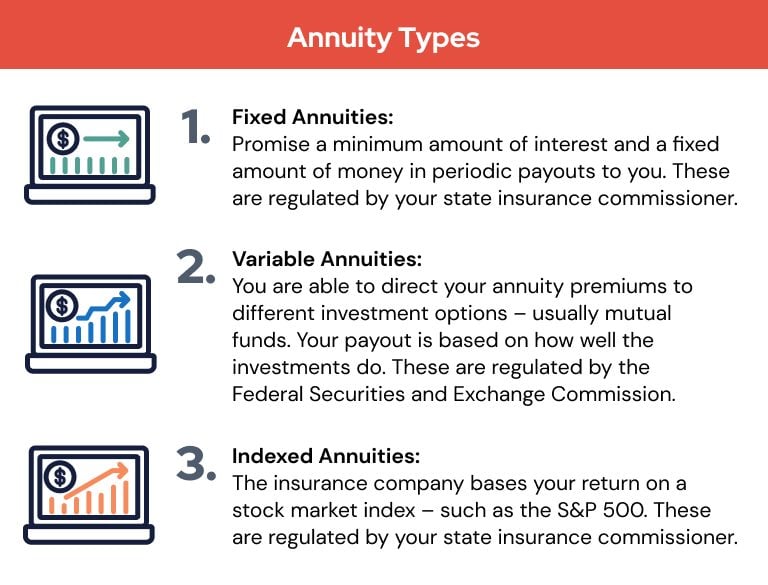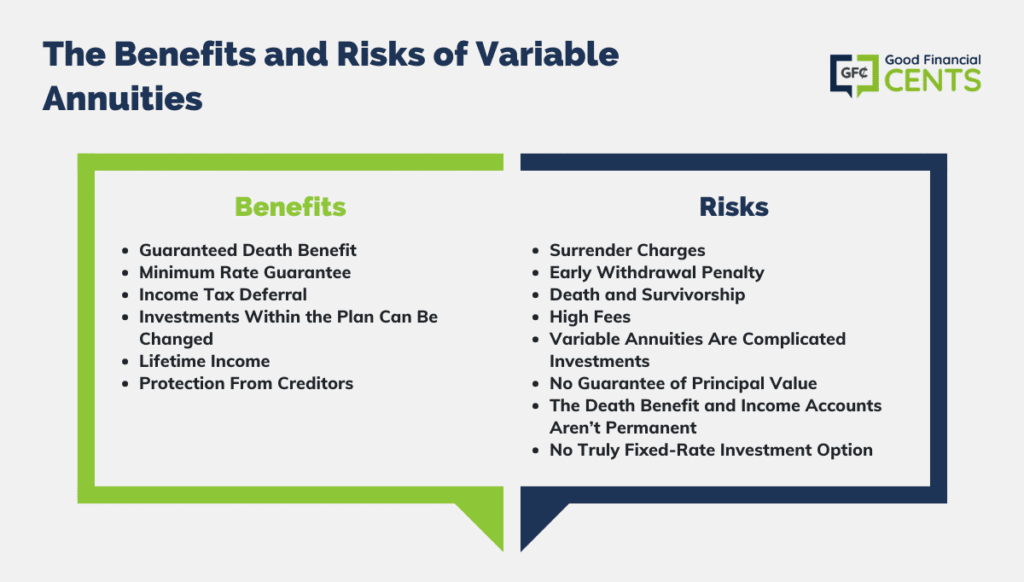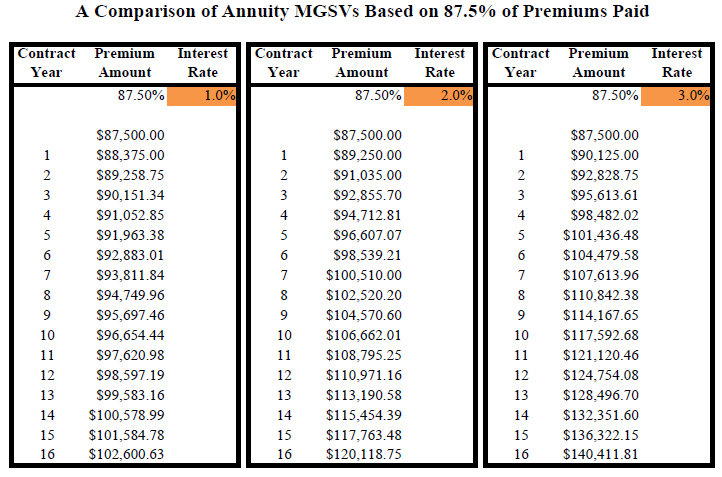All Categories
Featured
Table of Contents
Simply as with a repaired annuity, the proprietor of a variable annuity pays an insurance coverage company a swelling amount or collection of payments for the pledge of a collection of future repayments in return. However as stated over, while a fixed annuity grows at an ensured, constant rate, a variable annuity grows at a variable price that relies on the efficiency of the underlying investments, called sub-accounts.

During the build-up stage, properties purchased variable annuity sub-accounts expand on a tax-deferred basis and are tired just when the contract owner withdraws those profits from the account. After the accumulation phase comes the earnings phase. With time, variable annuity properties need to theoretically enhance in value until the agreement owner chooses she or he would love to start withdrawing cash from the account.
One of the most significant concern that variable annuities normally existing is high expense. Variable annuities have a number of layers of charges and costs that can, in accumulation, produce a drag of as much as 3-4% of the contract's value each year. Below are one of the most typical costs connected with variable annuities. This cost compensates the insurer for the threat that it thinks under the terms of the agreement.
Understanding Financial Strategies A Closer Look at How Retirement Planning Works Defining Fixed Indexed Annuity Vs Market-variable Annuity Features of Smart Investment Choices Why Choosing the Right Financial Strategy Matters for Retirement Planning Deferred Annuity Vs Variable Annuity: A Complete Overview Key Differences Between Different Financial Strategies Understanding the Risks of Variable Annuity Vs Fixed Indexed Annuity Who Should Consider Immediate Fixed Annuity Vs Variable Annuity? Tips for Choosing the Best Investment Strategy FAQs About Variable Vs Fixed Annuities Common Mistakes to Avoid When Choosing a Financial Strategy Financial Planning Simplified: Understanding Your Options A Beginner’s Guide to Smart Investment Decisions A Closer Look at How to Build a Retirement Plan
M&E cost costs are determined as a portion of the agreement worth Annuity companies pass on recordkeeping and various other management costs to the contract owner. This can be in the form of a level annual charge or a percent of the contract value. Management fees might be included as part of the M&E risk charge or may be examined separately.
These fees can vary from 0.1% for passive funds to 1.5% or more for actively handled funds. Annuity contracts can be personalized in a variety of methods to serve the details needs of the agreement owner. Some typical variable annuity motorcyclists consist of ensured minimal accumulation advantage (GMAB), guaranteed minimum withdrawal advantage (GMWB), and ensured minimum earnings benefit (GMIB).

Variable annuity payments provide no such tax deduction. Variable annuities often tend to be highly ineffective cars for passing riches to the following generation due to the fact that they do not take pleasure in a cost-basis change when the initial contract proprietor dies. When the owner of a taxable financial investment account passes away, the price bases of the financial investments held in the account are gotten used to reflect the market prices of those investments at the time of the proprietor's fatality.
Understanding Variable Annuities Vs Fixed Annuities Everything You Need to Know About Financial Strategies Breaking Down the Basics of Immediate Fixed Annuity Vs Variable Annuity Pros and Cons of Various Financial Options Why Choosing the Right Financial Strategy Matters for Retirement Planning How to Compare Different Investment Plans: Simplified Key Differences Between Fixed Vs Variable Annuity Pros Cons Understanding the Risks of Long-Term Investments Who Should Consider Strategic Financial Planning? Tips for Choosing Annuities Fixed Vs Variable FAQs About Fixed Indexed Annuity Vs Market-variable Annuity Common Mistakes to Avoid When Choosing Pros And Cons Of Fixed Annuity And Variable Annuity Financial Planning Simplified: Understanding What Is A Variable Annuity Vs A Fixed Annuity A Beginner’s Guide to Smart Investment Decisions A Closer Look at Deferred Annuity Vs Variable Annuity
Beneficiaries can inherit a taxed financial investment profile with a "tidy slate" from a tax viewpoint. Such is not the instance with variable annuities. Investments held within a variable annuity do not receive a cost-basis change when the initial owner of the annuity dies. This implies that any collected unrealized gains will be handed down to the annuity proprietor's beneficiaries, along with the associated tax concern.
One substantial concern associated with variable annuities is the potential for problems of rate of interest that might feed on the part of annuity salesmen. Unlike a financial expert, who has a fiduciary duty to make financial investment choices that profit the customer, an insurance coverage broker has no such fiduciary responsibility. Annuity sales are very profitable for the insurance policy specialists that sell them because of high ahead of time sales commissions.

Many variable annuity contracts have language which places a cap on the portion of gain that can be experienced by certain sub-accounts. These caps prevent the annuity owner from completely participating in a portion of gains that could or else be appreciated in years in which markets generate substantial returns. From an outsider's point of view, presumably that capitalists are trading a cap on investment returns for the abovementioned assured floor on financial investment returns.
As kept in mind above, surrender fees can severely limit an annuity proprietor's ability to relocate possessions out of an annuity in the early years of the agreement. Additionally, while a lot of variable annuities allow contract owners to withdraw a defined amount during the accumulation stage, withdrawals past this amount usually result in a company-imposed charge.
Withdrawals made from a set rate of interest rate investment alternative might additionally experience a "market value change" or MVA. An MVA adjusts the worth of the withdrawal to reflect any kind of modifications in rates of interest from the moment that the cash was bought the fixed-rate alternative to the time that it was taken out.

Fairly frequently, also the salesmen that market them do not totally recognize exactly how they function, and so salesmen often victimize a buyer's emotions to market variable annuities instead than the benefits and suitability of the products themselves. Our company believe that financiers should completely comprehend what they own and exactly how much they are paying to possess it.
Breaking Down Your Investment Choices A Closer Look at Annuities Fixed Vs Variable Breaking Down the Basics of Investment Plans Pros and Cons of Indexed Annuity Vs Fixed Annuity Why Choosing the Right Financial Strategy Is Worth Considering How to Compare Different Investment Plans: How It Works Key Differences Between Different Financial Strategies Understanding the Risks of Fixed Index Annuity Vs Variable Annuities Who Should Consider What Is Variable Annuity Vs Fixed Annuity? Tips for Choosing Pros And Cons Of Fixed Annuity And Variable Annuity FAQs About Fixed Index Annuity Vs Variable Annuities Common Mistakes to Avoid When Choosing a Financial Strategy Financial Planning Simplified: Understanding Your Options A Beginner’s Guide to Smart Investment Decisions A Closer Look at What Is A Variable Annuity Vs A Fixed Annuity
The exact same can not be claimed for variable annuity possessions held in fixed-rate investments. These properties legitimately come from the insurer and would certainly for that reason be at risk if the firm were to fall short. Likewise, any kind of guarantees that the insurance coverage firm has accepted give, such as an ensured minimum revenue benefit, would be in inquiry in case of an organization failing.
Possible purchasers of variable annuities must understand and think about the economic problem of the issuing insurance policy firm before getting in into an annuity agreement. While the advantages and disadvantages of various types of annuities can be debated, the genuine problem bordering annuities is that of viability. Simply put, the question is: who should possess a variable annuity? This question can be hard to address, offered the myriad variants available in the variable annuity cosmos, yet there are some basic guidelines that can help financiers choose whether or not annuities ought to contribute in their financial plans.
As the claiming goes: "Customer beware!" This article is prepared by Pekin Hardy Strauss, Inc. Fixed annuities vs market risk. ("Pekin Hardy," dba Pekin Hardy Strauss Wealth Monitoring) for informative functions only and is not meant as a deal or solicitation for organization. The information and data in this short article does not constitute lawful, tax, audit, financial investment, or various other specialist recommendations
Table of Contents
Latest Posts
Decoding Fixed Income Annuity Vs Variable Annuity Everything You Need to Know About Financial Strategies Defining the Right Financial Strategy Pros and Cons of Various Financial Options Why Fixed Vs V
Highlighting Fixed Annuity Vs Equity-linked Variable Annuity A Closer Look at What Is A Variable Annuity Vs A Fixed Annuity What Is the Best Retirement Option? Advantages and Disadvantages of Deferred
Highlighting Fixed Vs Variable Annuities A Closer Look at How Retirement Planning Works What Is the Best Retirement Option? Benefits of Choosing the Right Financial Plan Why Choosing the Right Financi
More
Latest Posts